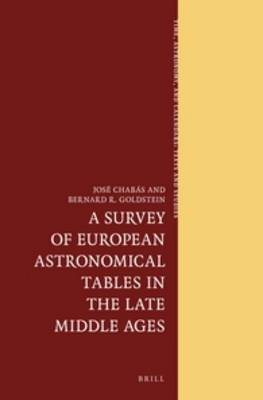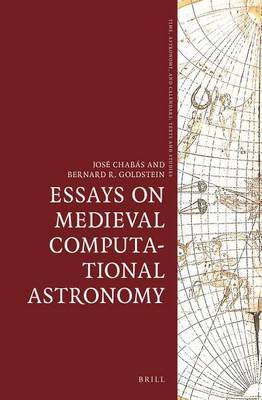Time, Astronomy, and Calendars
2 primary works
Book 2
A Survey of European Astronomical Tables in the Late Middle Ages
by Jose Chabas and Bernard R. Goldstein
Published 31 May 2012
A Survey of European Astronomical Tables in the Late Middle Ages is a first attempt to classify and illustrate the numerous astronomical tables compiled from about the 10th century to the early 16th century in the Latin West. The compilation of astronomical tables was a major and dynamic intellectual enterprise. These tables respond to a wide variety of astronomical problems and computational needs, and contain a large number of ingenious solutions proposed by astronomers over the centuries. In the absence of algebraic notation and mathematical graphing techniques, a table was often the best way to transmit precise information to the reader. Indeed, an astronomical table is not a just a list of data, but a structured way to present numerical information of astronomical interest.
"...the whole book which is an excellent guide for all those who are interested in the history of medieval European astronomy and, especially, in medieval astronomical tables."
Julio Samsó, University of Barcelona
"...the whole book which is an excellent guide for all those who are interested in the history of medieval European astronomy and, especially, in medieval astronomical tables."
Julio Samsó, University of Barcelona
Book 5
Essays on Medieval Computational Astronomy
by Jose Chabas Bergon and Bernard R. Goldstein
Published 1 January 2014
During the Middle Ages and early modern times tables were a most successful and economical way to present mathematical procedures and astronomical models and to facilitate computations. Before the sixteenth century astronomical models introduced by Ptolemy in Antiquity were rarely challenged, and innovation consisted in elaborating new methods for calculating planetary positions and other celestial phenomena. Essays on Medieval Computational Astronomy includes twelve articles that focus on astronomical tables, offering many examples where the meaning and purpose of such tables has been determined by careful analysis. In evaluating the work of medieval scholars we are mindful of the importance of applying criteria consistent with their own time, which may be different from those appropriate for other periods.

